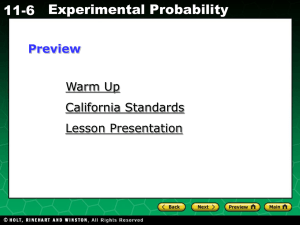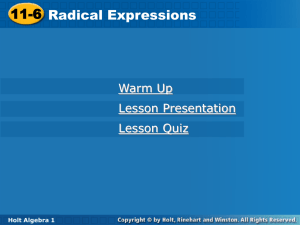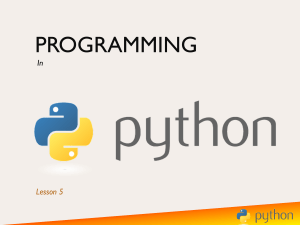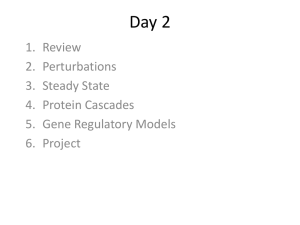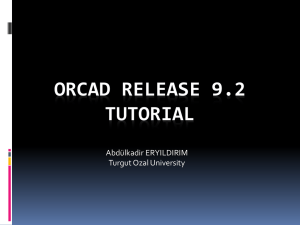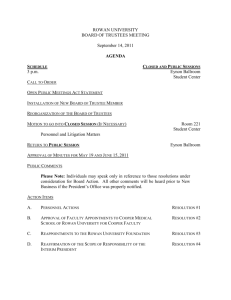Simulate a Problem and Make an Organized List(11
advertisement
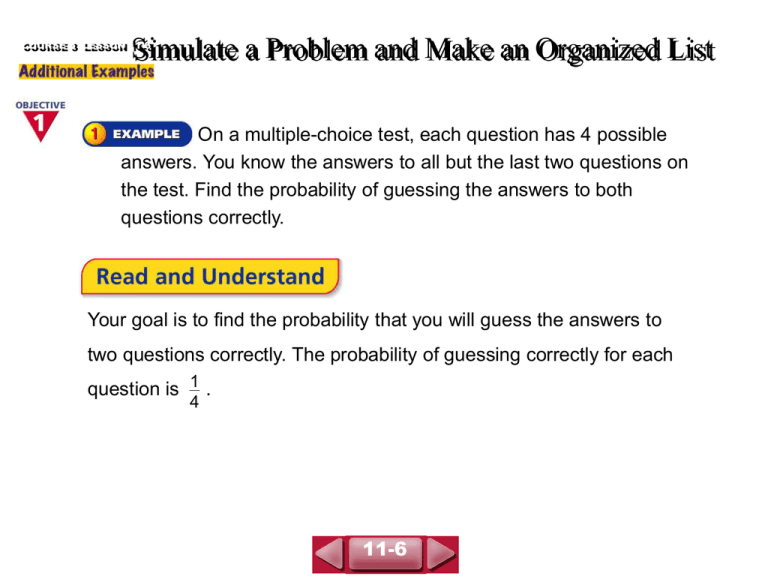
Simulate a Problem and Make an Organized List COURSE 3 LESSON 11-6 On a multiple-choice test, each question has 4 possible answers. You know the answers to all but the last two questions on the test. Find the probability of guessing the answers to both questions correctly. Your goal is to find the probability that you will guess the answers to two questions correctly. The probability of guessing correctly for each question is 1 . 4 11-6 Simulate a Problem and Make an Organized List COURSE 3 LESSON 11-6 (continued) Method 1 Simulate the problem. Simulate the problem by spinning a spinner with four equal parts, A, B, C, and D. Let A represent a correct guess and B, C, and D represent an incorrect guess. Two spins represent the last two questions. Simulate 50 tests by spinning the spinner 100 times. Circle the test simulations where you have two A’s. 11-6 AC CB AD CD CB DD DC DA CA CB 100 Spins BB CC DB CA BC AC DA CB BC BC BC AA AD CB DD BB AB CD AA DD DB DB CC DC CB DB DC BD DA DD CD CC CC CA AB BC CB AD CD AC COURSE 3 LESSON 11-6 Simulate a Problem and Make an Organized List (continued) The data shows that from 50 test simulations, AA occurs two times. P(2 correct guesses) = number of times AA occurs total number of sets 2 = 50 Substitute. 1 Simplify. = 25 1 The experimental probability is 25 , or 4%. 11-6 Simulate a Problem and Make an Organized List COURSE 3 LESSON 11-6 (continued) Method 2 Make an organized list. Make an organized list to find all possible outcomes. The diagram shows one correct guess and three incorrect guesses for each question. The tree diagram shows that out of 16 possible outcomes, there is only one outcome for two correct guesses. 11-6 Simulate a Problem and Make an Organized List COURSE 3 LESSON 11-6 (continued) number of times AA occurs 1 P(2 correct guesses) = total number of possible outcomes = 16 1 The theoretical probability is 16 , or 6.25%. The experimental probability of 4% and the theoretical probability of 6.25% are close in value. Check your results. P(2 correct guesses) = P(correct) • P(correct) 1 1 = 4 • 4 Substitute. 1 = 16 Multiply. This is the same probability you found by making an organized list. 11-6 Simulate a Problem and Make an Organized List COURSE 3 LESSON 11-6 What is the probability that each of the last four digits of a telephone number is an even number? Sample answer: Assuming that all digits are equally likely, the theoretical probability is 1 . 16 11-6
